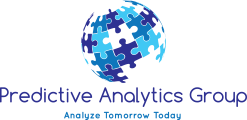Bottom Line Up Front: Your collections operation isn’t broken because you lack technology skills. It’s broken because you’re using yesterday’s models to solve tomorrow’s problems. While financial institutions are investing heavily in AI and automation, most are still making collection decisions based on outdated predictive models that can’t keep pace with rapidly changing consumer behavior and market conditions.
If your collections strategy still relies on models built pre-2020, you’re essentially flying blind in a storm.
The Hidden Cost of Model Decay
Traditional collections models—built on linear regression and basic logistic analysis—were designed for a world where consumer behavior was predictable and economic conditions were stable. That world no longer exists.
Consider This Reality Check:
- Serious credit card delinquencies (90+ days past due) have climbed sharply across the United States, reaching 12.31% of accounts in the first quarter of 2025—up from 10.69% a year earlier. This represents a year-over-year increase of more than 15%, pushing the rate to its highest level since the aftermath of the financial crisis.
- Recent surveys indicate that between 60% and 65% of U.S. consumers now live paycheck-to-paycheck.
Bank leaders report that many customers are prioritizing essentials like rent and groceries over unsecured debt payments, a pattern reminiscent of the 2008 downturn.
We worked with a large regional bank with multiple consumer products that had purchased smaller competitors over the years that led to 11 different legacy systems that housed various consumer and system data. The bank’s collections leaders told us they didn’t have the internal structure or expertise to have a handle on what was happening with their portfolios due to a lack of visibility into product performance.
We used our proprietary Enterprise Data Platform, GOBLIN, to consolidate all of the data streams into one hierarchal table environment. We built a full reporting suite with over 30 different reports with stunning data visualization while simultaneously re-establishing confidence by our client’s staff in the accuracy of the information being shared. All reports are ready and available by 6AM each day so each of the collections team leaders can start their day by reviewing their favorite reports and preparing for their day’s tasks and meetings.
And as a result of this project, the bank brought us in for a much broader engagement focused on its credit-underwriting models.
Three Digital Imperatives That Can’t Wait
1. Predictive Contact Optimization.
Advanced analytics can now identify optimal times and channels to contact debtors by analyzing past interaction records through machine learning models, significantly enhancing the efficiency of collection efforts and increasing right-party contact rates. Machine learning models can analyze hundreds of variables to identify at-risk accounts long before they hit the critical 90-day mark. It’s like having a financial weather forecast that offers suggestions for proactive intervention.
2.Dynamic Customer Segmentation:
Modern collections require a more holistic view of the delinquent customer, including their ability and willingness to pay, intent to pay, and contact channel preference. Behavioral segmentation such as distinguishing between strategic defaulters and distressed payers or identifying micro-segments like gig workers or medical debt holders enables more precise, effective interventions.
3. Automated Decision Intelligence
By matching the most appropriate forbearance strategy for each customer and communicating via their preferred channel, creditors can optimize both the customer experience and the chance of collecting, while reducing costs. Technology now exists to automate payment reminders, customize messaging, and trigger the right intervention at the right time.
The Model Modernization Framework
- Start with Data Foundation. The success of predictive analytics projects is highly dependent on the quality of data used to train models. If your data is trapped in silos or contaminated by inconsistencies, even advanced AI will produce garbage results. Industry commentary frequently highlights the prevalence of data silos in banking, and the challenge of siloed data remains widely recognized as a barrier to effective collections and analytics.
- Deploy Real-Time Analytics. Financial institutions are using predictive analytics to analyze customer behavior and transaction history to predict customers at risk of churning, enabling collections teams to proactively intervene with real-time monitoring capabilities. Leading banks now integrate external data feeds like local unemployment filings, gas price fluctuations, and housing market indicators to predict payment stress before it shows up in their internal metrics.
- Build Explainable Models. Regulatory bodies require compliance with financial regulations, meaning predictive models must be explainable, with results that can be understood and validated. Bank of America and other leading banks have discussed the integration of Robotic Process Automation (RPA) with advanced analytics to improve transparency with regulators, increase operational efficiency, and reduce risk.
- Integrate Across Channels. Your digital transformation must connect every touchpoint from initial delinquency alerts to final resolution in a seamless workflow that adapts based on real-time customer responses.
What’s At Stake
Banks implementing advanced analytics and automation are already seeing substantial gains, with generative AI driving cost reductions of up to 60% in risk and compliance processes over the next two to three years. However, the collections industry has been relatively slow to embrace new techniques in analytics compared to other areas of financial organizations, as investment in the collections function is often overlooked in favor of projects that aim to grow the customer base.
This hesitation creates a massive competitive advantage for institutions willing to act now.
Your Next Move
While 98% of CFOs report their finance teams have invested in digitization initiatives, only 41% say less than a quarter of their processes are actually automated, according to the McKinsey CFO Pulse Survey published in July 2024. The most forward-moving banks are reworking team structures, decision-making, and how they deliver value.
You have three options:
- Do nothing and hope year-over-year charge-off and delinquency rates will not continue, and that recovery rates on defaulted loans start increasing over historical norms.
- Make incremental changes and hope economic conditions stabilize.
- Transform completely and gain sustainable competitive advantage.
One last story: A large U.S. credit card issuer hired us to reengineer its Collections and Recovery processes. We determined our client was over-penetrating its delinquent portfolios and not taking advantage of scorecards and technology it had at its disposal. PAG helped analyze delinquency trends and built strategies including a bucket 1 importation strategy, payment propensity strategies to optimize payment suite offerings, and a channel optimization strategy to help contact the customer via their preferred channel.
PAG also built a vendor placement model to help determine which 3rd party vendors should work late-stage delinquency and charged-off accounts based on prior performance. We helped design business requirements for the Client’s website so full collections functionality could be achieved and the Client could start to drive customers there for payment as opposed to over dialing.
We were able to increase website traffic by 50% and online payments doubled to 60% of delinquent payments in the first six months of the transformation. Operating costs were reduced by 35% in the first six months as the client used SMS and email to replace much of its dialing and drove customers to the website via embedded links to pay there. Payment suite optimization increased by 20% with more targeted offers reducing backend roll rates by 12% in the first six months. And recovery rates quickly improved by 11% as vendor placements were optimized using the new PAG model.
The good news for both of us? The client re-engaged us to look at their fraud servicing area, and we delivered similar results.
Ready to transform your collections operation? The models and strategies that got you here won’t get you where you need to go. At Predictive Analytics Group, we’ve helped financial institutions across the country rebuild their collections capabilities from the ground up, using our proprietary GOBLIN platform to integrate disparate data sources and deploy advanced analytics that actually work.
If your platform is burning, let’s build something better together.





